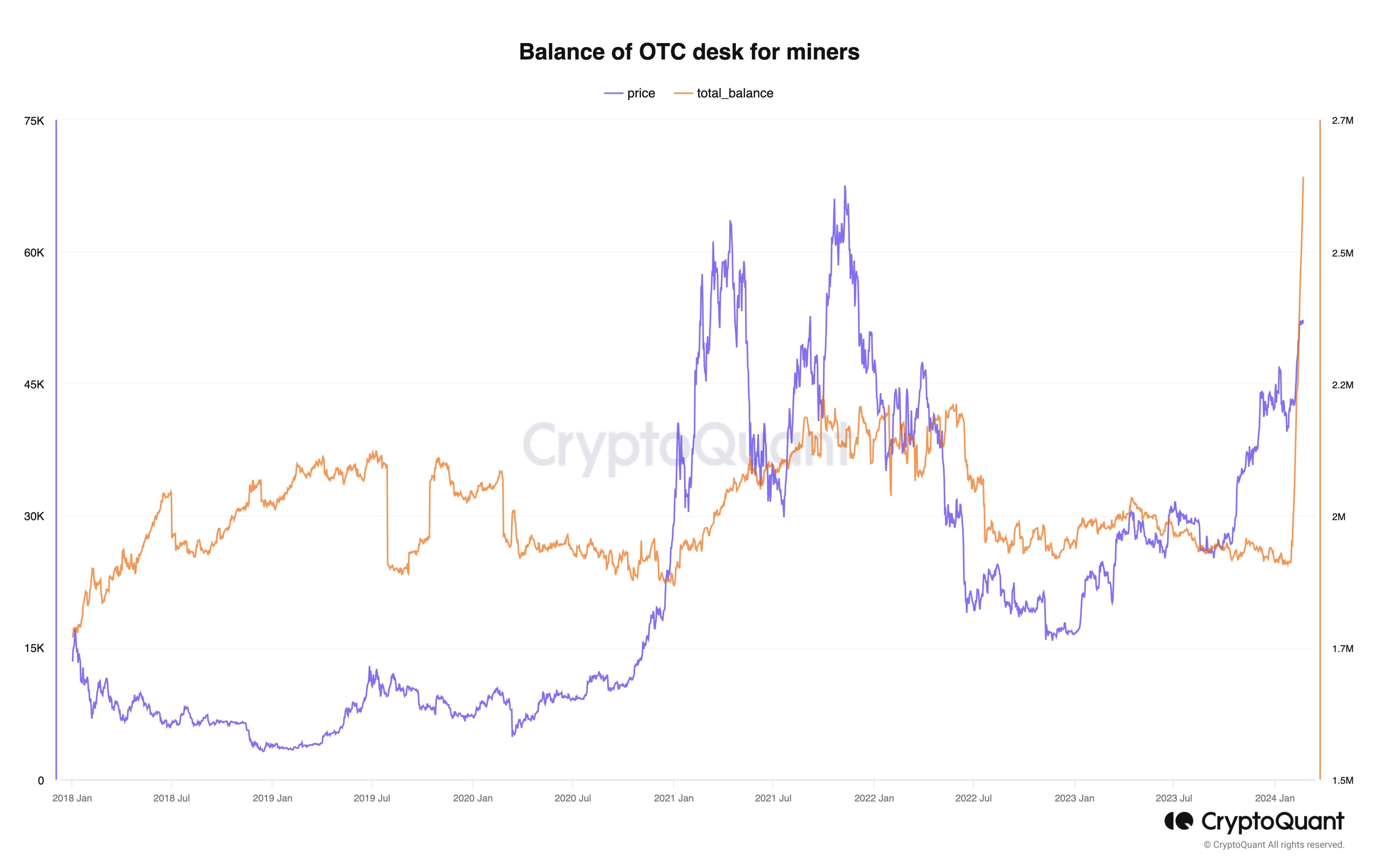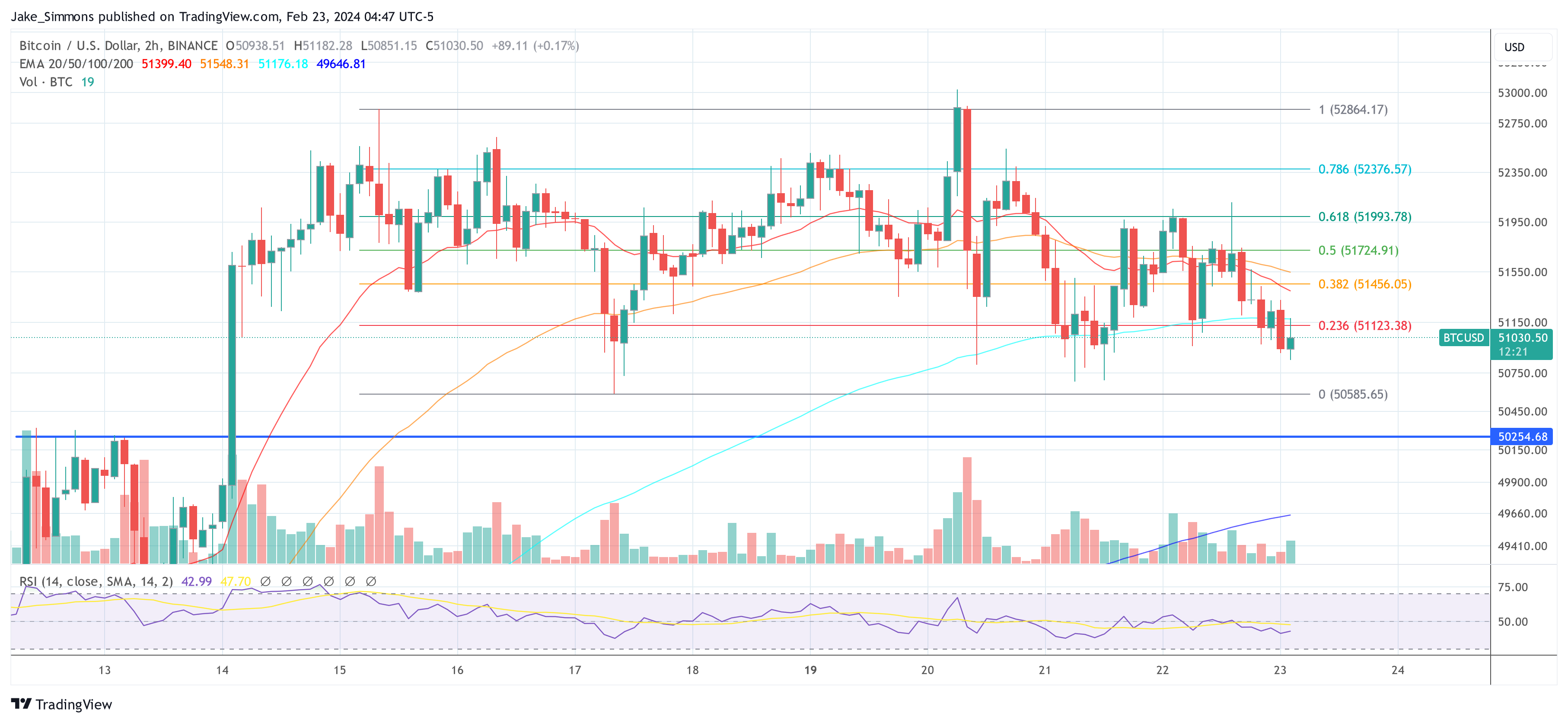[ad_1]
Despite the landmark launch of spot Bitcoin Exchange-Traded Funds (ETFs) spearheaded by industry behemoths BlackRock and Fidelity—ranking among the top five ETF launches in their initial month of all time—BTC’s price response has been notably subdued. Prior to the launch of these EFTs, BTC soared to a peak of $49,040 on January 11.
Fast forward to today and BTC is currently settling at $51,000, marking a modest appreciation of 4.3%. This tepid performance has puzzled market observers, particularly in light of massive net inflows of $5.278 billion into all Bitcoin ETFs within a mere six-week span. These could have been even significantly higher if there would have been $7.398 billion in outflows from Grayscale’s GBTC.
The Bombshell Discovery
Yet, CryptoQuant CEO Ki Young Ju may now have found the “real” reason that has had an even bigger impact on Bitcoin’s price action in recent weeks. Ju’s analysis highlights the transfer of over 700,000 BTC to Over-The-Counter (OTC) desks predominantly utilized by miners in the weeks succeeding the spot Bitcoin ETF approvals—an equivalent of approximately $35.6 billion at current prices.
He shared the below chart and stated: “700K BTC has moved to OTC desks used by miners over the past three weeks following spot Bitcoin ETF approval.” This revelation has sparked a reevaluation of the impact of such substantial transfers on the market dynamics of Bitcoin.

Ju later corrected his statement slightly and explained, “Got some questions about the data accuracy. These OTC addresses are not only used by miners. It could be used by other whales. We’ll let you know what addresses caused this spike,”acknowledging the complexity and multifaceted nature of these transactions.
The Bitcoin OTC Mechanism Explained
OTC desks facilitate direct transactions between two parties, unlike open exchanges where orders are matched among various participants. This method of trading can handle large volumes of Bitcoin without immediately affecting the market price.
When substantial amounts of BTC are bought or sold on public exchanges, the sudden increase in supply or demand can lead to significant price volatility. By opting for OTC transactions, large buyers, such as ETF issuers, can accumulate Bitcoin in vast quantities without triggering a steep price increase that would inevitably follow if these purchases were made on spot markets.
Thus, Ju theorizes that the issuers behind the newly launched Bitcoin ETFs are strategically purchasing Bitcoin via OTC desks. This approach serves a dual purpose: it allows these entities to fulfill the demand from ETF investors by securing enough Bitcoin to back the ETF shares while simultaneously mitigating the immediate price impact that such large-scale purchases would have if conducted on open exchanges.
The essence of Ju’s claim is that if the 700,000 BTC had been bought on the spot market instead of through OTC channels, the influx of demand would have likely propelled Bitcoin’s price significantly higher than the observed 4.3% increase. This subdued price action, therefore, could be attributed to the strategic use of OTC transactions by ETF issuers and other large-scale buyers.
However, there is also a silver lining. What will happen if the miners can only sell half of the current supply following the upcoming BTC halving in April, but the demand remains? Moreover, this constraint isn’t limited to miners alone.
Given that the OTC supply is finite and likely depleting rapidly, it appears inevitable that a supply shock could impact the market once the OTC reserves are fully tapped. When entities like BlackRock and others are compelled to purchase Bitcoin on the open market to back up their ETFs, the BTC price could react swiftly.
At press time, BTC traded at $51,030.

Featured image created with DALL·E, chart from TradingView.com
Disclaimer: The article is provided for educational purposes only. It does not represent the opinions of NewsBTC on whether to buy, sell or hold any investments and naturally investing carries risks. You are advised to conduct your own research before making any investment decisions. Use information provided on this website entirely at your own risk.
[ad_2]
Source link



